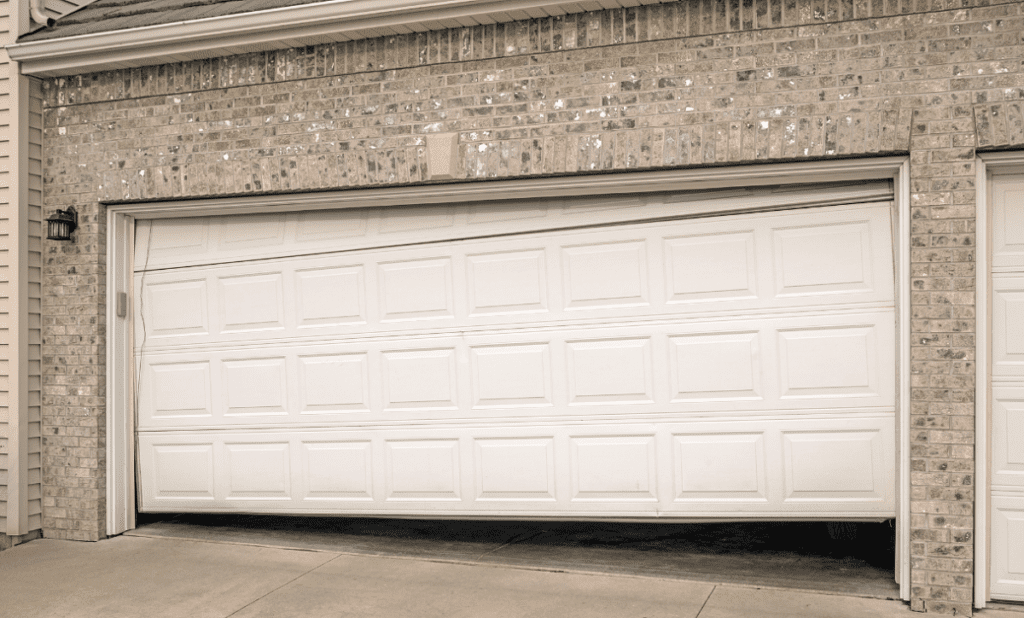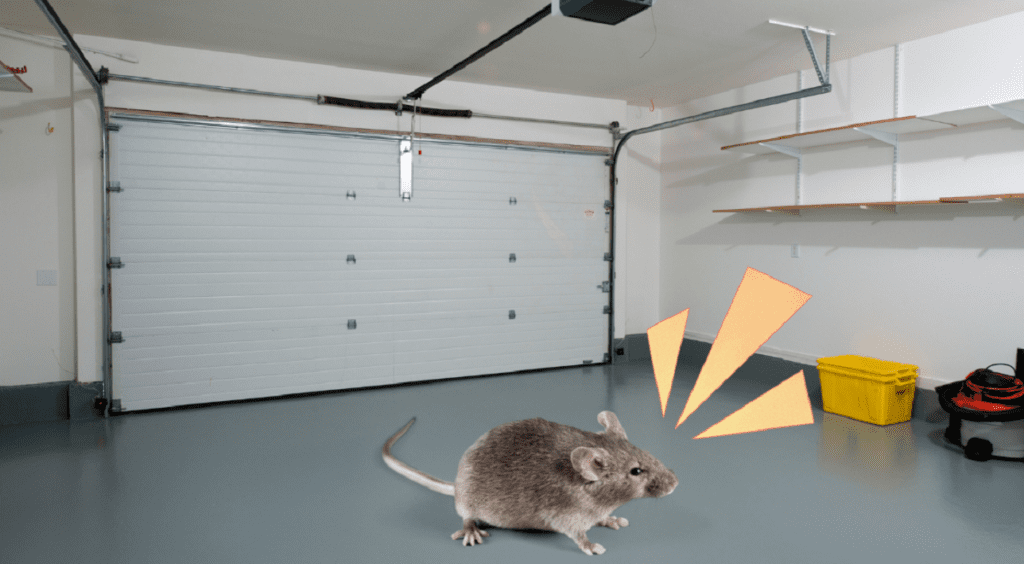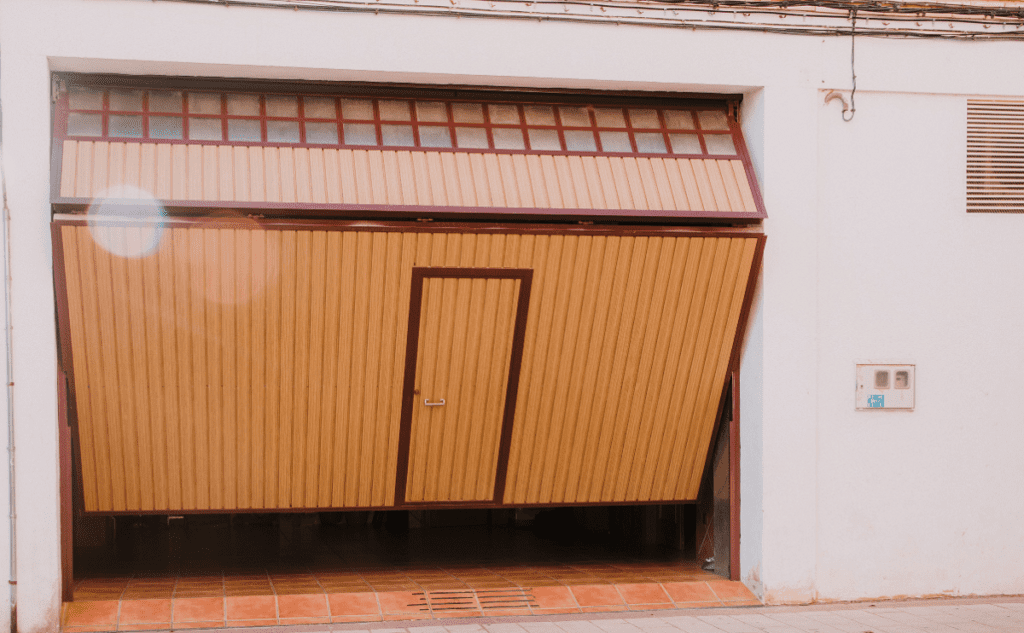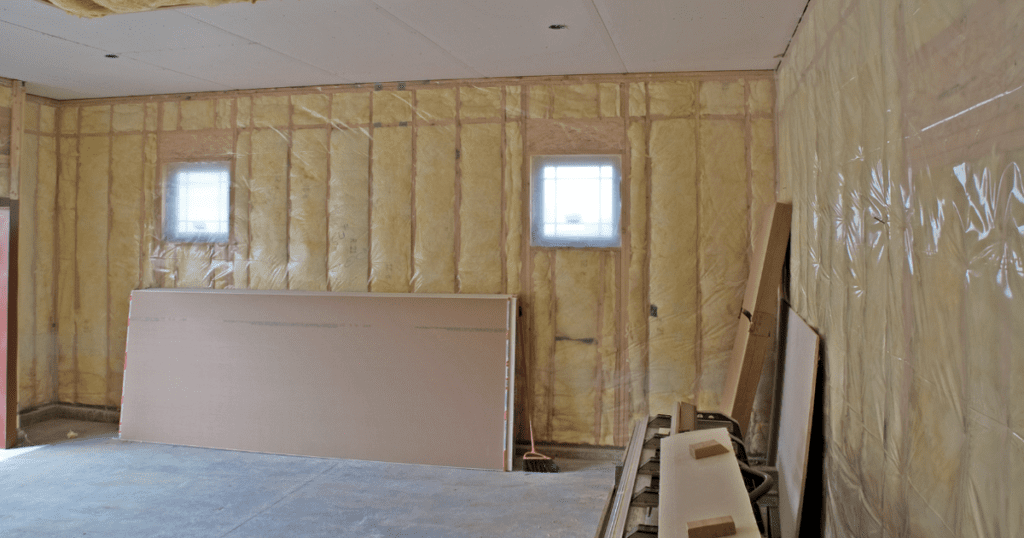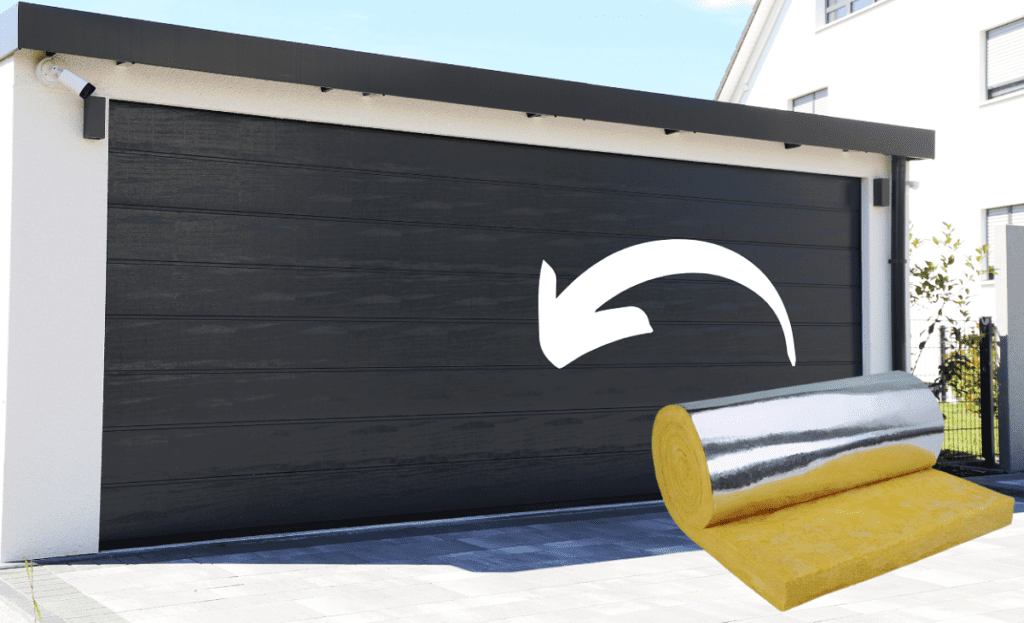
Why You Should Insulate Your Garage Doors
Are you tired of walking into a freezing, uninviting garage during the winter months? Do you constantly feel heat escaping through your garage doors during the summer?
If so, it’s time to consider insulating your garage doors. However, what is the best way to insulate garage doors? Insulated garage doors not only provide a more comfortable environment for you and your family, but they can also have significant benefits for your wallet.
By preventing heat loss through the garage, insulated doors can reduce energy costs and help increase overall home efficiency. In fact, according to a study by Clopay Building Products, an insulated steel door can result in as much as a 71% reduction in energy loss when compared to an uninsulated door.
The Benefits of Insulating Your Garage Doors
The benefits of insulating your garage doors go beyond just cost savings; they can also enhance overall home security and provide better sound insulation. With proper insulation installed on overhead or roll-up garage doors, noisy neighbors or busy roads will be significantly muffled. In addition to enhancing security and reducing noise pollution, effective insulation for steel or other materials of garage doors can improve home value.
Homebuyers are becoming increasingly conscious of energy-efficient homes that require minimal maintenance costs over the years. By taking advantage of weatherproofing methods like sealing gaps in your garage doors with high-performance insulation materials designed specifically for climate conditions where you live (for example, in areas prone to high humidity), you could potentially save thousands on maintenance costs over the long run.
It’s clear that insulating roll-up or overhead garage doors are not only necessary but also beneficial for homeowners who seek comfort, cost savings on energy bills, enhanced soundproofing effects, or even improved property value. Stay tuned for our next section, where we dive deep into the types of insulation materials available today for your garage doors.
Types of Insulation for Garage Doors
The Battle for Thermal Insulation: Selecting the Right Insulation for Garage Doors
Achieving thermal insulation for garage doors should be a priority. However, there are several types of insulation materials out there, each with its own pros and cons. It is essential to choose the right material that is not only effective but also fits your budget and needs.
- One option is fiberglass insulation. It comes in batts or loose fill and can be installed between the studs and rafters in your garage door panels. Fiberglass has an adequate R-value, meaning it has excellent thermal resistance. While it may be more cost-effective than other materials, installation can be challenging due to its tendency to sag over time.
- Another option is spray foam insulation, which offers an excellent R-value and enhanced soundproofing qualities compared to fiberglass insulation. Its application process makes it ideal for overhead garage doors with irregular surfaces or roll-up garage doors with a lot of openings. Spray foam insulation generally costs more than fiberglass batts but pays off in energy efficiency and soundproofing.
- Plastic sheeting is another material that can improve energy efficiency on steel garage doors. Despite being relatively inexpensive, plastic sheeting offers little in terms of insulating properties compared to other materials used on this list.
Boost Your Energy Efficiency: Comparing Garage Door Insulation Materials
Effective insulation techniques for garage doors begin with choosing the right material, as each has its strengths and benefits. The most common types are spray foam, batts made from fiberglass or rock wool, injecting foam into pre-cut holes in your door panels, or vinyl-backed polystyrene panels.
- Spray foam excels regarding R-value per inch (R-6) but requires professional installation as DIY efforts can lead to overfilling or underfilling voids within the door panels.
- Fiberglass batts, on the other hand, are affordable and easy to install but less effective in preventing air infiltration or soundproofing.
- Rigid foam board insulation has an R-value of 5 per inch, with vinyl-backed polystyrene panels having the highest rating at R-8.
These panels come premade to fit into the door panel cavities, making their installation process straightforward and cost-effective.
Determining which type of insulation material is best depends on multiple factors, such as your garage door design, climate conditions, budget, and your preference regarding energy savings or soundproofing. Any material capable of improving energy efficiency is worthy of consideration.
The Cost Factor: Insulation for Overhead Garage Doors
Garage door insulation costs can vary significantly depending on the material selected for insulating roll-up garage doors or overhead garage doors. While more expensive than other options like fiberglass batts or plastic sheeting, spray foam insulation has a considerable return on investment due to its superior insulating properties. Injection foam kits can be used to prevent air infiltration around side edges and top door panels.
They can improve energy efficiency by sealing gaps between your steel garage doors and frame at a moderate cost when compared to pre-cut polyurethane kits that require professional installation. No matter what strategy you choose in enhancing your home’s energy efficiency with garage door insulation, aim for an R-value that suits your needs while keeping an eye on affordability.
Steps to Insulate Garage Doors
Step-by-Step Guide on How to Insulate a Garage Door
When it comes to insulating your garage door, there are a few steps you need to follow.
- First, you’ll want to measure the dimensions of your garage door panels so that you know how much insulation material you’ll need.
- Next, you can start installing the insulation by cutting it to size and placing it between the door panels.
- If needed, use tape or adhesive to secure the insulation in place.
It’s important to note that different types of insulation may require slightly different installation methods. For example, some materials may require stapling or nailing into place rather than using tape or adhesive. Be sure to consult the manufacturer’s instructions before getting started.
Tips on How to Ensure Proper Installation
While DIY garage door insulation is certainly possible, it’s important that you take care during the installation process. One of the most important things is making sure that there are no gaps in your garage door through which air can escape.
This means taking care when measuring and cutting your insulation so that it fits snugly within each panel. Another tip for proper installation is paying attention to the R-value of your chosen insulation material.
The R-value refers to its thermal resistance; in other words, how effective it is at blocking heat flow. Generally speaking, higher R-values are better for achieving the optimal way to insulate garage doors.
Consider hiring a professional if you’re unsure about tackling this project yourself or if you have a particularly large or complex garage door system. A professional will have experience working with various types of insulation for overhead garage doors and can ensure that everything is installed correctly for maximum efficiency.
Overall, insulating your garage door is an excellent way of enhancing soundproofing with garage door insulation as well as improving energy efficiency with energy-efficient garage door insulation. By following the steps and tips outlined in this section, you can achieve effective garage door insulation and prevent heat loss through garage doors.
Common Mistakes to Avoid When Insulating Garage Doors
The Problem with Imperfect Installation
Weatherproofing garage doors with insulation is an essential step to achieving thermal insulation for garage doors. However, while the benefits of insulating garage doors are undeniable, many homeowners make common mistakes that compromise the effectiveness of the insulation. One common mistake people make when installing insulation on their garage doors is failing to ensure a proper fit and installation.
Insulation for steel garage doors, insulation for wooden garage doors – whatever type of material you use – if it’s not installed correctly, you’re not going to get the full benefits. Even choosing the best method for insulating garage doors won’t help if you don’t install it properly.
When selecting the right insulation for your garage door, be sure to read and follow all manufacturer instructions carefully. This will help you achieve optimal results and avoid unwanted gaps where heat can escape.
The Dangers of Inconsistent Insulation
One other common mistake when it comes to insulating a garage door is inconsistency in the application. Some homeowners may focus on only one side or neglect some areas entirely during installation, which only leads to heat loss through those unprotected areas. Preventing heat loss through your insulated door requires uniform coverage across all parts of the door panel or frame.
It’s essential that you apply equal thicknesses and layers across every inch of your panel surface area. Garage door insulation tips like this should be kept in mind at all times during installation if one hopes to achieve maximum energy savings from their insulated garage door.
The Importance of Proper Sealing
When considering effective insulation techniques for your garage door, consider also enhancing soundproofing with an appropriate type of material like foam boards or reflective foil laminates, depending on climate-specific conditions. But there is more than one way that improperly installed or maintained insulation can affect your garage. One of the more significant hazards is improperly sealed joints around the door.
Sealing these gaps and spaces between the door panel and frame is crucial for achieving the full benefits of insulation. Energy-efficient garage door insulation demands a proper seal, so do not neglect this step, as it could be a significant factor in your energy bill at the end of each month.
Overall, knowing common mistakes to avoid when insulating your garage doors can mean a world of difference in utility cost savings, safety, and comfort. With proper installation techniques and adequate maintenance, you’ll achieve maximum energy savings and protection against harsh weather conditions!
Cost-effective Ways to Insulate Your Garage Door
Insulate Your Garage Doors Properly Without Breaking the Bank
Effective insulation techniques for garage doors are essential to prevent heat loss and keep energy bills low. However, many people are deterred from insulating their garage doors due to the perceived high cost of insulation materials. Fortunately, there are budget-friendly alternatives that can achieve optimal results and save you money in the long run.
One cost-effective way to insulate your garage door is by using weatherstripping tape. This is an affordable yet effective solution that can reduce drafts and prevent heat loss through gaps in your garage door.
Weatherstripping tape comes in various widths and lengths, making it easy to customize for your specific needs. Another option is bubble wrap insulation, which is made of a layer of bubbles sandwiched between two sheets of plastic film.
This affordable material can be cut to size and attached using double-sided tape or adhesive strips. Bubble wrap insulation also provides great soundproofing quality as well as excellent thermal insulation.
Selecting the Right Insulation for Garage Doors
Insulation options for garage doors vary in material type, R-value (insulating power), durability, cost, and ease of installation. Selecting the right insulation for your garage doors depends on several factors, such as climate conditions, budget constraints, personal preference, and type of garage door.
Polyurethane foam board insulation is a popular option for its high R-value (up to R-18) that offers excellent energy efficiency benefits along with enhanced soundproofing quality. However, it tends to be more expensive compared to other materials, such as fiberglass batts or blown-in cellulose.
Fiberglass batts come in pre-cut sizes that fit standard-size panels, making it easier for DIY installation without requiring special tools or skills. It’s also relatively cheap compared with other types of insulation.
However, it’s not ideal for use in humid environments, as this can cause mold growth that affects insulation performance. Blown-in cellulose is another affordable option and easy to install, especially in tight spaces and corners.
It’s made of recycled materials and offers good sound-deadening properties. However, it may settle over time, reducing its insulating power.
Tips on How to Save Money While Still Achieving Optimal Insulation Results
Insulating garage door panels may seem like a costly undertaking at first glance, but making some simple decisions can save you some cash while still achieving optimal results. Here are some tips:
- Before buying insulation materials, measure your garage door panels precisely to avoid wastage or underestimation that could lead to extra costs.
- Choose the right insulation material for your specific needs based on R-value rating and durability.
- Consider installing the insulation yourself to avoid labor costs. Ensure that you follow instructions thoroughly or seek assistance from professionals if needed.
- If possible, buy insulation material in bulk as it’s often cheaper than buying individual pieces.
- Shop around for deals and discounts on insulation material from different suppliers before making a purchase.
Cost-effective ways to insulate your garage door are achievable with a little creativity and research. By choosing the right insulation materials and installation techniques that fit within your budget constraints, you can achieve optimal energy efficiency benefits without breaking the bank.
The Benefits of Hiring a Professional
Insulating garage doors can be a challenging task, especially if you have never done it before. While there are many DIY tutorials available on the internet, they often fail to provide adequate information and guidance on how to properly insulate the garage door.
This is where hiring a professional insulation installer becomes important. One of the benefits of hiring a professional is that they have the necessary experience and expertise to handle any type of garage door insulation project.
They can help you select the right insulation for your specific needs and ensure it is installed correctly for optimal results. Additionally, professionals have access to high-quality materials that may not be available to homeowners at their local hardware store.
The Advantages Of Having An Expert Handle The Job
An expert insulator has the tools required for effective installation – tools that most homeowners don’t possess. They will also follow proper safety protocols, ensuring that no accidents occur during installation.
Another benefit of hiring an experienced technician is that they can provide comprehensive advice on how to maintain your newly insulated garage door over time and answer any questions you may have about garage door insulation R-value or weatherproofing techniques. Hiring a professional saves time and money in the long run since professionals are able to complete installation with little or no errors, which could result in costly future repairs due to water damage or mold accumulation, as well as maintaining energy efficiency through proper sealing of gaps in the panels while enhancing soundproofing with garage door insulation.
Don’t Miss Out On These Benefits – Insulate Your Garage Doors Properly Today
If you’re still wondering whether or not it’s worth hiring a professional, consider this: proper insulation for overhead garage doors can significantly improve energy efficiency, saving you money on your utility bills in the long run. Investing in insulation for wooden or steel garage doors is a smart move, especially if you live in an area with harsh weather conditions. The cost of hiring a professional insulation installer will pay for itself over time as your energy bills decrease and you enjoy a more comfortable, soundproof living space.
Choosing the right insulation for your garage door and installing it correctly is crucial to reaping all the benefits that come with effective garage door insulation. Consider hiring a professional to get the job done right, and start enjoying all the advantages of having an insulated garage door today.
Questions About Insulating Garage Doors
How Long Does it Take to Install Garage Door Insulation?
One of the most frequently asked questions about insulating garage doors is how long the installation process takes. The answer depends on several factors, including the type of insulation material you use, the size of your garage door, and whether or not you hire a professional to do the job. If you choose to install insulation yourself, expect to spend several hours on the job.
Even with pre-cut insulation panels or rolls designed for easy installation, it won’t be a quick process. You’ll need to measure and cut each piece carefully to fit your garage door exactly, which can be time-consuming.
However, if you decide to hire a professional installer, they can typically complete the job in just a few hours. This is because they have experience working with different types of insulation materials and know how to efficiently cut and install them.
Regardless of whether you do it yourself or hire someone else, make sure that you take your time and do it right. Rushing through the process can result in poorly installed insulation that won’t provide adequate protection from heat loss or sound transmission.
Will Garage Door Insulation Affect My Energy Bill?
Another common question people ask when considering insulating their garage doors is whether it will impact their energy bill positively or negatively. The answer is that it depends on several factors. If your home’s HVAC system uses ductwork in your garage for heating or cooling purposes, then insulating your garage door will likely result in energy savings by reducing thermal transfer between inside and outside air.
Additionally, even if there isn’t ductwork present in your garage space but there are finished living spaces above it, such as bedrooms, then insulated doors are worth considering as they act like any other external wall from an energy efficiency perspective – minimizing thermal bridging and air leaks. However, If your garage is detached from your home or isn’t otherwise connected to your HVAC system, then insulating the garage door won’t have as much of an impact on your energy bill.
However, it will still provide benefits such as reducing sound transfer and enhancing thermal insulation for certain items stored in the garage. It’s worth noting that while the initial cost of installing garage door insulation can be significant depending on which insulation option you choose, over time the benefits may outweigh the costs by saving you money on heating and cooling costs.
Frequently Asked Questions
What is the most cost-effective way to insulate a garage door?
The most cost-effective way to insulate a garage door is to use reflective insulation panels or foam board insulation. These materials are relatively affordable and can provide decent insulation value when properly installed. Alternatively, weatherstripping and sealing any gaps or cracks in the garage door can also help improve insulation at a lower cost.
What materials are commonly used to insulate garage doors?
Commonly used materials to insulate garage doors include polystyrene (EPS) foam panels, polyurethane foam insulation, reflective insulation, and fiberglass insulation. Polystyrene and polyurethane foam offer good insulation properties, while reflective insulation reflects heat. Fiberglass insulation can also be used, but it is less common for garage doors due to potential moisture issues.
How do I insulate my garage door to keep it cool?
To insulate your garage door and keep it cool, you can install insulation panels made of polystyrene or polyurethane foam. These panels provide thermal insulation and help prevent heat transfer. Additionally, ensure proper weatherstripping around the edges of the door to seal out hot air, and consider adding a radiant barrier or reflective insulation for further heat reflection.
Should you put insulation on a garage door?
It is generally recommended to put insulation on a garage door. Insulating the garage door helps regulate temperature, improve energy efficiency, and reduce heat transfer. It also helps minimize noise and can make the garage more comfortable for various activities. However, the specific insulation materials and methods may vary based on the climate, desired insulation level, and the type of garage door.
What type of garage door has the best insulation?
Garage doors with polyurethane foam insulation tend to have the best insulation properties. Polyurethane foam is a high-density insulation material that provides excellent thermal efficiency and structural strength. Doors with this type of insulation typically have higher R-values, which indicates better insulation performance. Look for garage doors labeled as “polyurethane insulated” for optimal insulation.
How can I insulate my door better?
To better insulate your door, you can consider adding weatherstripping along the edges and bottom of the door to seal any gaps. Installing door sweeps or thresholds can also help prevent drafts. Additionally, using draft stoppers or door snakes can provide extra insulation. If needed, you may also explore adding additional insulation materials to the door, such as foam panels or reflective insulation.
Conclusion
Key Points Discussed in the Article
We have explored the optimal ways to insulate garage doors and highlighted the importance of proper insulation. We have discussed the types of insulation materials available and compared their pros and cons.
We provided a step-by-step guide on how to properly insulate your garage door, as well as common mistakes to avoid during installation. Additionally, we offered budget-friendly alternatives for those who cannot afford expensive insulation materials while still achieving energy-efficient results.
Importance of Proper Insulation for Your Garage Door
Properly insulating your garage doors is critical for maintaining an energy-efficient home while preventing heat loss through your garage doors. Insulated garages are more comfortable during extreme weather conditions because they keep out cold air in winter and hot air in summer. Insulation also reduces noise transfer between different areas of your home and can even improve soundproofing by enhancing acoustic-dampening qualities.
While there are various types of insulation materials available for garage doors, selecting the right one depends on specific needs and preferences based on climate-specific factors such as temperature range, humidity level, wind resistance, etc. By using effective garage door insulation techniques coupled with weatherproofing strategies like sealing gaps around windows or using weatherstripping tape, homeowners can save money on energy bills while reducing their carbon footprint.
Insulate your garage doors properly by following our guidelines to enhance comfort levels in extreme weather conditions while reducing noise transfer. By doing so, you will not only enjoy lowered energy bills but also contribute towards protecting our environment by reducing carbon emissions from heating and cooling systems at home!

